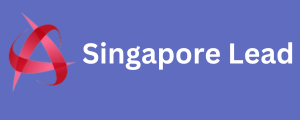Telecommunications relies on massive data. Networks connect billions globally. Every call, text, and data stream creates information. Databases Billing & Beyond are fundamental to this. Generic database solutions often fail. Telecom approaches. These systems must handle immense scale. They ensure high availability. They also support rapid data processing.
Convergent Billing Systems
Modern telecom demands flexible billing. Legacy systems were often . Voice, data, and video had separate bills. Convergent billing integrates these. A single, unifid bill is . This simplifies customer experience. It also streamlines internal processes. Databases supporting this are complex. They must handle diverse usage types. They real-time rating capabilities. This enables dynamic pricing models. Discounts are instantly. Promotions are seamlessly. This innovation improves revenue assurance. It billing errors significantly.
Real-time Data Processing
Telecom networks generate constant data. Call detail records (CDRs) stream continuously. Data usage logs arrive non-stop. Network performance metrics are . Traditional databases with this volume. New approaches use real-time processing. In-memory databases are common here. They store data in RAM. This allows lightning-fast operations. Stream processing engines are also vital. They analyze data as it arrives. They identify anomalies instantly. This supports fraud detection. It enables network adjustments. This rapid response is crucial. It minimizes service disruptions. It boosts customer satisfaction.
Cloud-Native Database Architectures
Cloud computing transforms telecom. Databases are in the cloud. This offers immense scalability. Resources can be as specific database by industry needed. This flexibility is very important. It handles fluctuating demands. Cloud-native databases are for this. They use architectures. Data is across many servers. This ensures high availability. It improves disaster recovery. database services are . They operational overhead. This allows telecom companies to focus. They can innovate on services. They can build customer relationships.
Graph Databases for Network Management
Network relationships are complex. Traditional relational databases struggle here. Graph databases excel at connections. They model network meet softline digital platform topology efficiently. Devices are nodes. Connections are . This structure is intuitive. It allows rapid pathfinding queries. It helps identify network dependencies. Root cause analysis is . Impact of outages can be fast. This enhances network resilience. It optimizes resource allocation. It supports network healing. Graph databases reveal hidden patterns. They improve overall network intelligence.
Data Lakes and Analytics Platforms
Beyond operational data, analytics thrive. Data lakes store raw, diverse data. This includes text. Social comments are whatsapp filter examples. Call recordings can be . This offers huge analytical potential. Big data technologies process this. Apache Hadoop and Spark are . They enable large-scale data analysis. Machine learning models are . This data-driven insight is strategic. It guides business decisions. It fosters continuous innovation.
AI and Machine Learning Integration
Artificial intelligence is transformative. Machine learning algorithms enhance databases. . Conversational AI interfaces with data. Chatbots answer billing questions. They provide support. This manual effort. It improves operational efficiency. It enhances customer experience. This integration creates smarter systems.
